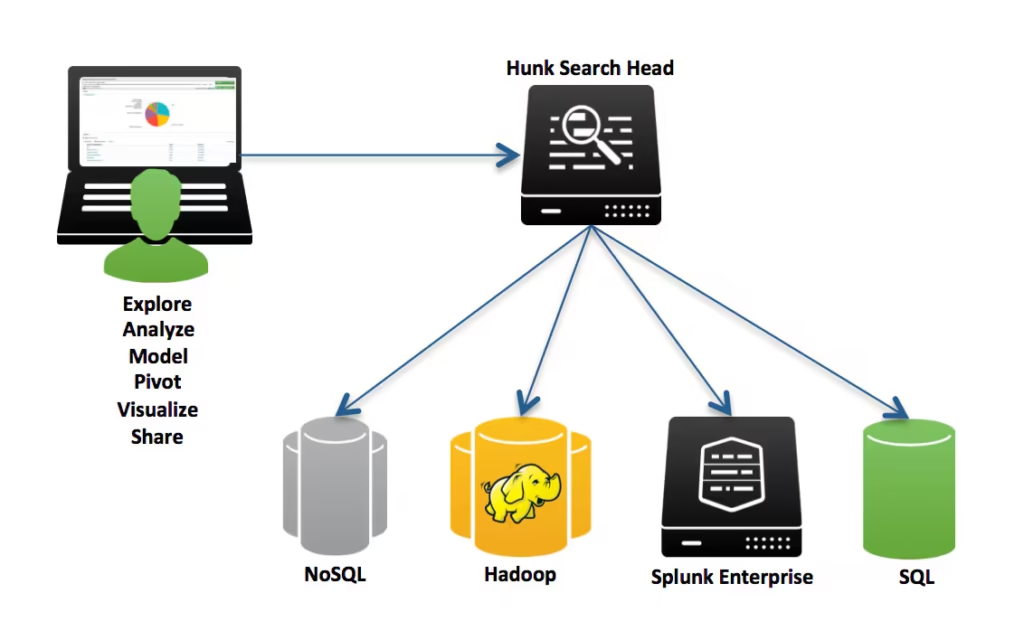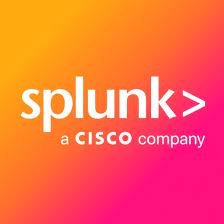Splunk Data Analytics is no longer just a niche solution for IT pros—it has grown into a vital tool for digital transformation across industries. In 2025, businesses are relying on Splunk more than ever to manage, analyze, and act on the massive amounts of data generated daily. This article explores how Splunk is shaping the future of IT operations, cybersecurity, business intelligence, and beyond.
What Is Splunk?
Splunk is a software platform used to search, monitor, and analyze machine-generated big data. It collects data from websites, applications, sensors, devices, and more, helping businesses gain insights in real time. At its core, Splunk helps organizations turn data into doing.
Originally popular in the IT and security sectors, Splunk has now expanded its use cases into finance, healthcare, manufacturing, and retail.
Why Splunk Data Analytics Matters in 2025

With the growing volume of data from IoT devices, mobile apps, cloud platforms, and remote operations, organizations face challenges in making sense of this information quickly. Splunk Data Analytics provides:
- Real-time monitoring
- Actionable insights
- Predictive analytics powered by AI/ML
- Improved incident response
- Enhanced cybersecurity
Let’s break down some of the key reasons Splunk Data Analytics is so impactful in today’s digital landscape.
Real-Time Insights for Faster Decisions
In business, speed matters. Delays in detecting system issues or customer experience problems can lead to revenue losses or reputational damage. Splunk provides real-time dashboards and alerts, allowing IT teams and decision-makers to react immediately.
Examples:
- E-commerce platforms can identify and resolve checkout failures within seconds.
- Healthcare systems can monitor patient data streams for anomalies, helping doctors intervene quickly.
Splunk’s ability to process massive amounts of machine data instantly makes it an indispensable tool for time-sensitive industries.
Splunk and Cybersecurity: A Perfect Match
In 2025, cyber threats are more sophisticated than ever. From phishing to ransomware attacks, businesses must stay a step ahead. Splunk’s analytics capabilities are central to modern Security Information and Event Management (SIEM) strategies.
Key Cybersecurity Features of Splunk:
- Threat detection using anomaly patterns
- Automated alert systems for unauthorized access
- Integration with third-party security tools
- Compliance reporting for industries like healthcare and finance
Many organizations use Splunk Enterprise Security (ES), which adds advanced correlation searches and risk-based alerting, making threat management more proactive.
Splunk and Artificial Intelligence
AI and machine learning are essential components of Splunk’s evolution. With the integration of Splunk Machine Learning Toolkit (MLTK), organizations can create models that predict outcomes and automate responses.
Use Cases:
- Predict server outages before they happen
- Forecast network bandwidth needs
- Spot fraud patterns in financial transactions
This predictive layer helps organizations move from a reactive model to a proactive and even preventive approach.
Cloud-Native and Hybrid Support
As businesses shift to cloud-first strategies, Splunk has also evolved. Today, Splunk Cloud Platform allows companies to analyze data from AWS, Azure, and Google Cloud while still supporting hybrid environments.
Benefits:
- Scalable data ingestion
- Elastic search performance
- Seamless integration with DevOps pipelines
- Reduced operational overhead
Companies no longer need to choose between cloud or on-prem—they can have both.
Splunk in Different Industries
1. Finance
- Real-time fraud detection
- Regulatory compliance (e.g., SOX, PCI)
- Customer behavior insights for personalization
2. Healthcare
- Monitoring IoT medical devices
- Ensuring data security for patient records
- Operational analytics to improve care delivery
3. Retail
- Tracking customer journey from app to store
- Monitoring inventory and supply chain systems
- Analyzing feedback and sentiment on social media
4. Manufacturing
- Predictive maintenance for machinery
- Monitoring factory sensors for safety
- Quality control analytics from production lines
5. Public Sector
- National security surveillance
- Emergency response coordination
- Smart city traffic and infrastructure monitoring
Splunk’s adaptability makes it relevant to nearly every vertical in 2025.
Splunk’s Partner Ecosystem

Splunk doesn’t work in isolation. Its strong partner ecosystem includes companies like:
- AWS
- Cisco
- ServiceNow
- Palo Alto Networks
These integrations allow Splunk to be embedded in the broader enterprise tech stack. For instance, Splunk + ServiceNow enables auto-ticketing for incidents, while Splunk + Cisco improves network security insights.
The Splunk Community and Support
One of Splunk’s major strengths is its vibrant user community. From forums to SplunkBase (its app marketplace), users can access thousands of apps, add-ons, and tutorials to enhance their deployments.
In addition, Splunk offers:
- Certifications for IT and security professionals
- Free trials for new users
- Enterprise support plans and onboarding resources
This ecosystem helps new and experienced users alike get value from the platform quickly.
Splunk Data Analytics: The Competitive Edge
When comparing Splunk to other analytics tools like Datadog, ELK Stack, or IBM QRadar, Splunk stands out because of its:
- Unified platform for observability and security
- Customizable dashboards with rich visualizations
- Enterprise scalability
- Support for structured and unstructured data
- AI-powered automation and machine learning
This mix of features gives businesses a true competitive edge.
What’s New in Splunk in 2025?
In recent updates, Splunk has introduced:
- Splunk AI Assistant – a chatbot-style interface for querying data using natural language
- Edge Processor – real-time data filtering and transformation at the edge
- Federated Search – search across multiple Splunk environments from a single UI
These features are designed to support growing data needs while improving usability and reducing noise.
Challenges to Consider
While powerful, Splunk isn’t without challenges:
- Pricing complexity – depending on data volume, Splunk can be expensive
- Learning curve – despite improved UX, advanced features require training
- Data indexing – improper indexing can slow performance and inflate costs
However, many of these are mitigated by proper planning, training, and scaling options like Splunk Cloud.
Final Thoughts: The Future with Splunk Data Analytics
Splunk Data Analytics is more than just an IT tool—it’s a core enabler of digital transformation. As we progress through 2025, companies that leverage real-time data, predictive AI, and integrated security insights will lead their industries. Splunk gives businesses the visibility and power to make smarter decisions faster.
Read Next – HCL Technologies: Growth, Innovation, and Global Reach






